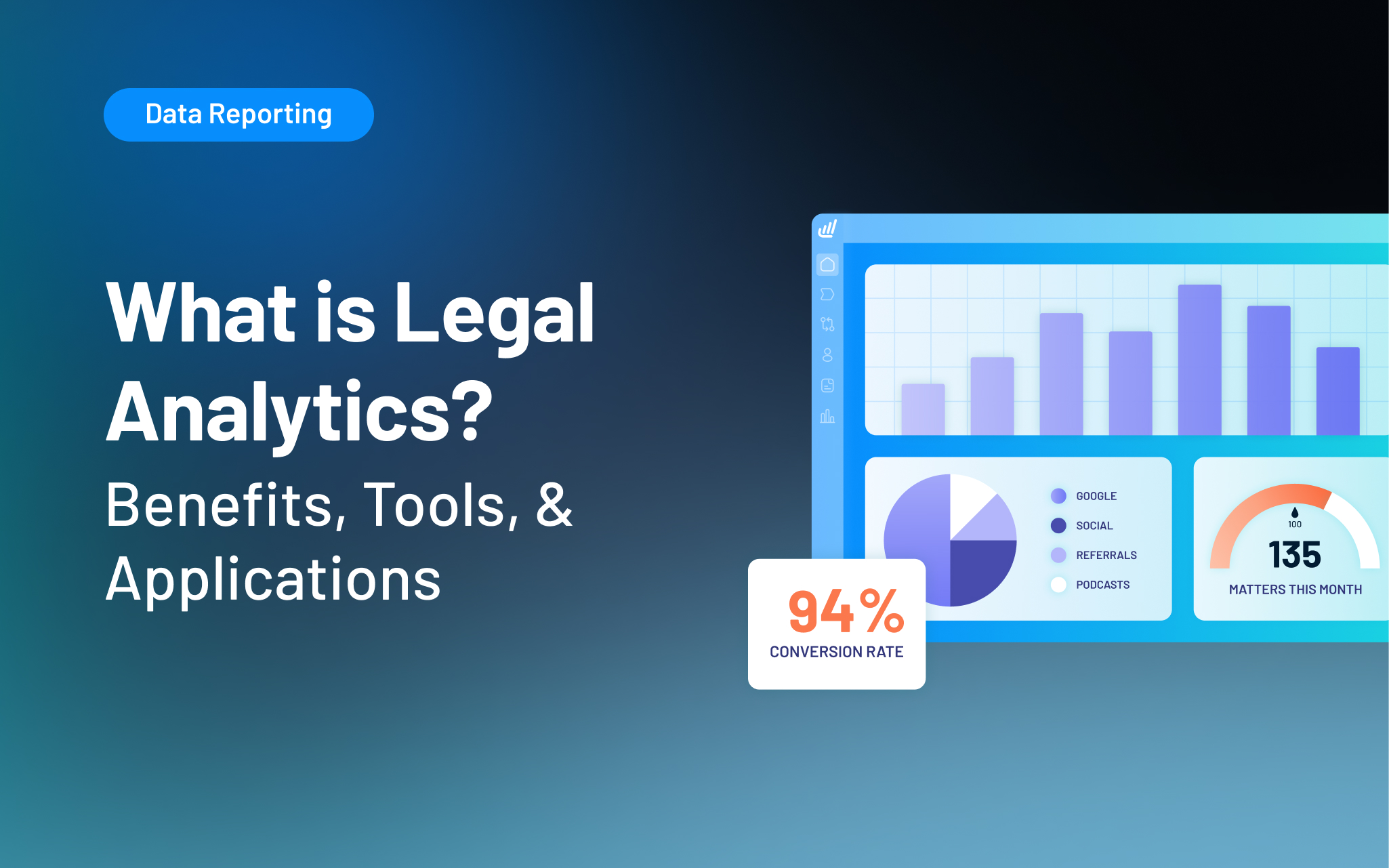What is Legal Analytics? Benefits, Tools, & Applications
Learn what legal analytics is, why it matters, and how Lawmatics data reporting & visual analytics help law firms boost profitability and efficiency.

Table of contents
Legal analytics transforms how you handle the mountains of court records, client information, and case documents competing for your attention. Instead of drowning in data, it allows you to organize it, spot trends, and work smarter.
And the numbers speak for themselves: A 2024 Lex Machina survey notes 68-70% of law firms use legal analytics, with 70% of those users citing improved litigation outcomes as the primary driver. If you're not using it yet, you're missing out on opportunities to increase your operational efficiency.
In this guide, we’ll cover everything you need to know about legal analytics, from the key benefits to the challenges of its applications.
Types of Legal Analytics Measurements
Legal analytics uses large datasets to draw insights, identify patterns, and predict outcomes. Often powered by AI algorithms, analytics tools parse court records, client data, and internal firm information to make connections that would otherwise take weeks or months to do manually.
Legal analytics come in three types:






